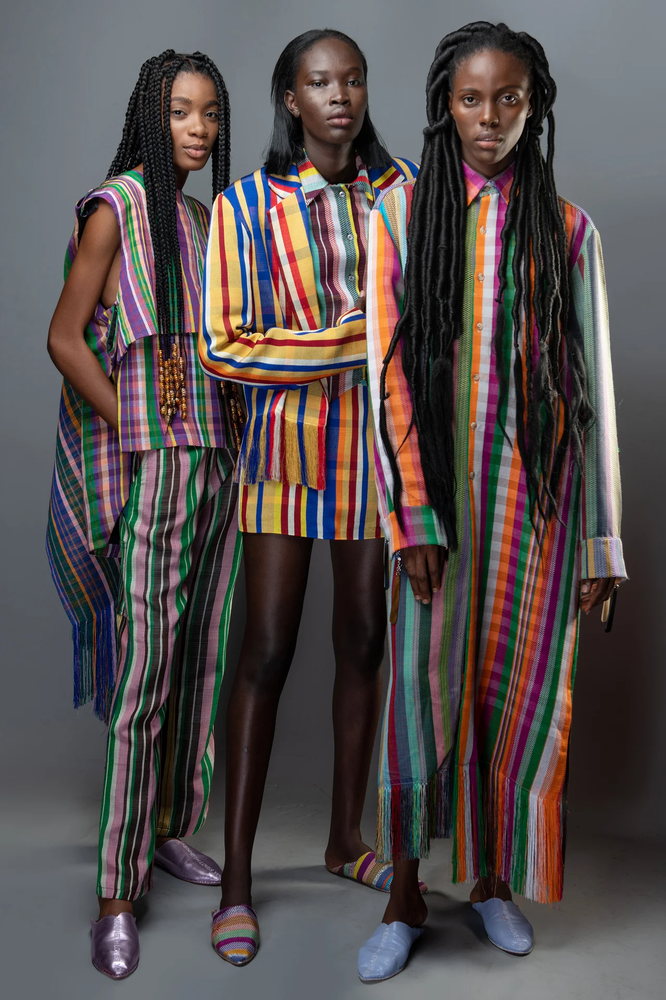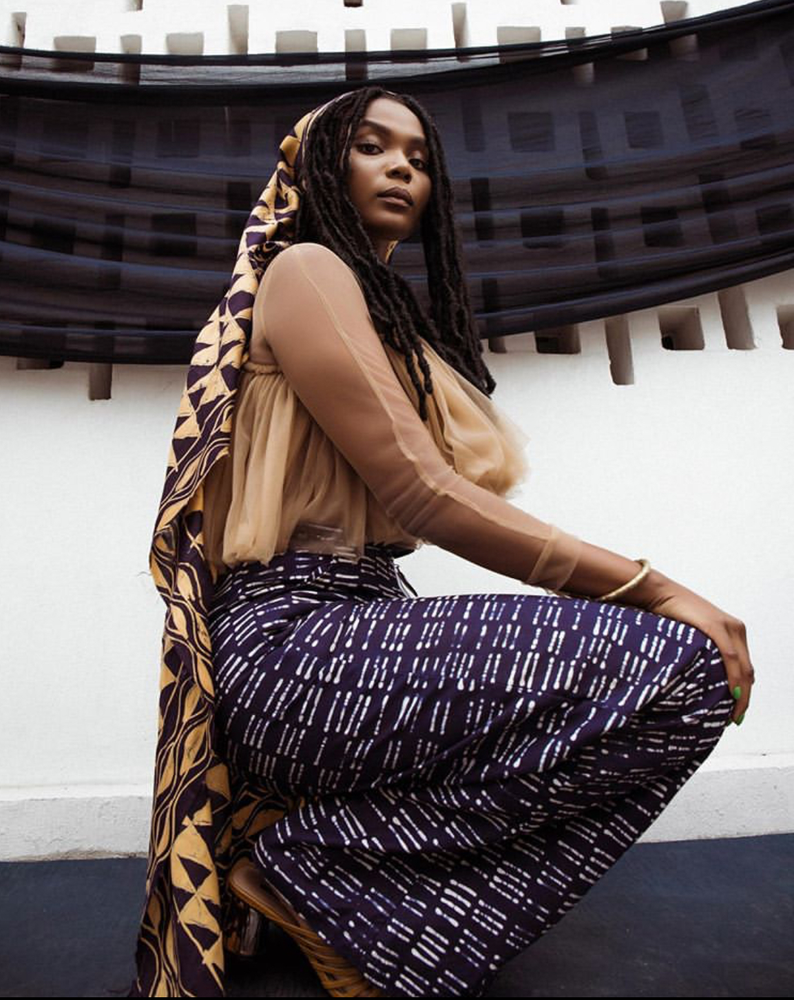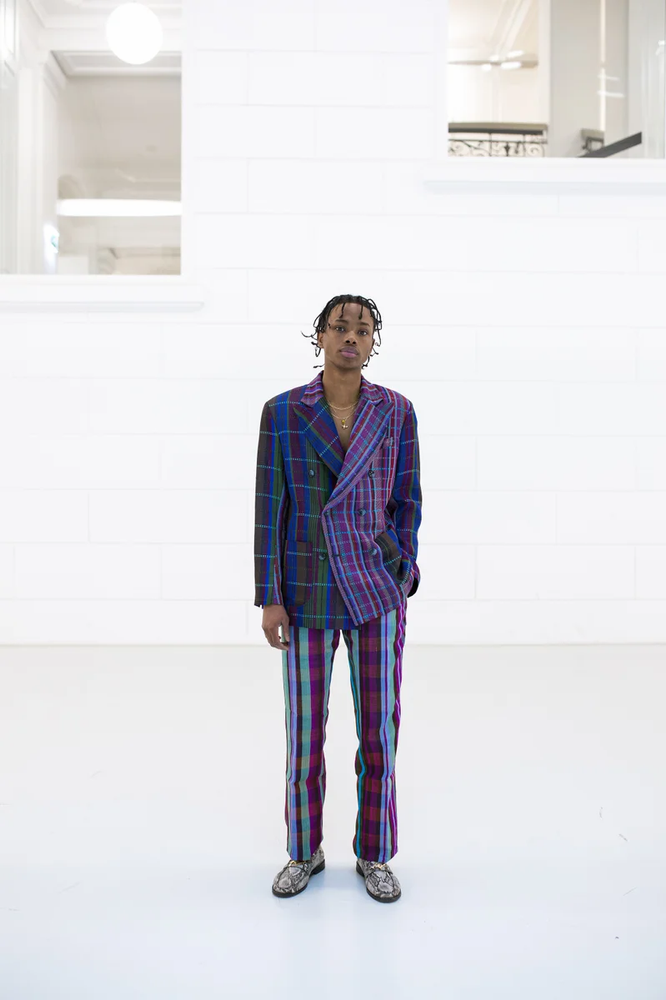Colorful, bold, and undeniably African is the new wave in high fashion. A new generation of designers are rediscovering traditional Nigerian textiles. These textiles are being newly appreciated not only for their beauty and complexity, but for their natural and sustainable processes. As the international luxury industry places their focus on artisanal techniques, Nigerian textiles are on the radar, providing opportunities beyond its domestic consumer base.

Photo: Kenneth Ize Autumn/Winter 2019 (Kelechi Amadi-Obi)
Adire is one of the many Nigerian textiles that is embraced by designers. One of its high-profile advocates is Amaka Osakwe, designer of label Maki Oh which has been worn by the likes of Michelle Obama and Lupita Nyong’o. Adire is created from a mix of natural indigo dye, water, and ash stirred at intervals in clay pots over the course of seven days. The cloth, which is tied in various ways or pasted with cassava (the starchy root of a tropical tree) to create unique patterns, is saturated in the pots and then laid out to dry. Adire has been passed down from one generation to the next and made by the Yoruba people of southwestern Nigeria for centuries.
In fact, Nigeria was once home to Africa’s largest textile industry. According to a 2019 report by Cornell University, Nigeria had more than 180 mills employing 450,000 people in the 1970s and early 1980s. But today few of those companies exist. As of 2017, there were only 25 in operation according to a 2017 review of the industry by Oxford Business Group. Cheap imports along with weakening infrastructure contributed to driving Nigeria’s textile artisans to the edge of collapse. Many fabrics that are recognized globally as “African prints” are mass-produced overseas. Nigeria currently imports $4 billion of ready-made clothing and textiles each year, leaving designers with little choice but to depend on high-quality imported fabrics. This is a result of factory-produced batik from the Netherlands which flooded West Africa over a century ago. The brightly colored wax-finished fabric is widely thought to be an African textile, but it was originally manufactured for Indonesia, a former Dutch colony. As it gained popularity in West Africa, it left little room for the domestic textiles industry to thrive. We covered the history of West African prints in a piece last month.

Maki Oh Collection (Maki Oh Instagram)
However in recent years new life has been breathed into the industry by Nigerian luxury labels working with locally made fabrics. Brands like Maki Oh, Post Imperial, Duro Olowu and Orange Culture have incorporated themes inspired by adire into their collections. Newer designers are eagerly turning to adopting the ancient low-impact production methods behind traditional cloths. The revival of interest in Nigeria’s tradition of handwoven textiles is bringing to life artisanal methods for a new generation of consumers with a modern touch, says Lagos based fashion consultant Bolaji Animashaun. These include aso oke from the Yoruba, Akwete cloth from the Igbo, and akwa ocha from the Aniocha people of Delta state. Leading Nigerian designers such as Tiffany Amber, Kenneth Ize and Emmy Kasbit have featured all of these textiles in their collections. The aspirational value of these high-profile designer brands has increased the allure of indigenous textiles over the last ten years. Animashaun credits growing pride in African heritage to the increasing popularity in these techniques. By popularizing them, designers are securing the livelihoods of artisans and creating a unique Nigerian design identity.
Designer Kenneth Ize seeks to preserve the heritage craft of Yoruba origin in his work and does so through his use of aso oke. Ize tracked down artisans who were still keeping the dying art alive. Every piece of fabric that goes into his pieces is produced by Nigerian communities that he has gotten to know personally and that his brand has employed. His eponymous label has been creating buzz on the international scale for the past few seasons, and he made his official debut at Paris Fashion Week earlier this year. Ize presented a colorful collection of his signature pieces made with aso oke and donned by supermodels Imaan Hammam and Naomi Campbell.

Kenneth Ize (Photo Courtesy of Kenneth Ize)
According to Paris-based luxury brand consultant Uche Pézard, Nigerians are rebuilding their indigenous traditions to explore their cultural narratives through the craft. “Being a Nigerian designer today, that is using fashion as a platform to promote culture and heritage,” she said in an interview with Vogue. African brands are a blueprint for the study in sustainability. Because of the reality of scarcity in Nigeria, by default nothing can be wasted. Nigerian brands also face challenges producing high volumes which has led them to produce amounts that are closely aligned with demand.
Challenges in production mean that it is common for Nigerian designers to produce one season each year. Until now, this method of production posed a problem for the designers in the international marketplace. However, as the global industry seeks ways to reduce waste, their problem may be tuned into opportunity. Emissions from global textiles production total at 1.2 billion metric tons annually, exceeding those of all international flights and maritime shipping combined. The natural dyes used by Nigerian brands however, are less damaging to the environment than chemical pollutants used for mass production. An increase in demand for textiles produced by Nigerian artisans create a wider potential of artisanship for the Nigerian economy. Pézard notes that “the more designers use these textiles, the more people are trained, the more economic benefits, the higher the volume of trade. It becomes an industry in itself and an economic contributor to Nigeria as a country.”
Powered by WPeMatico


